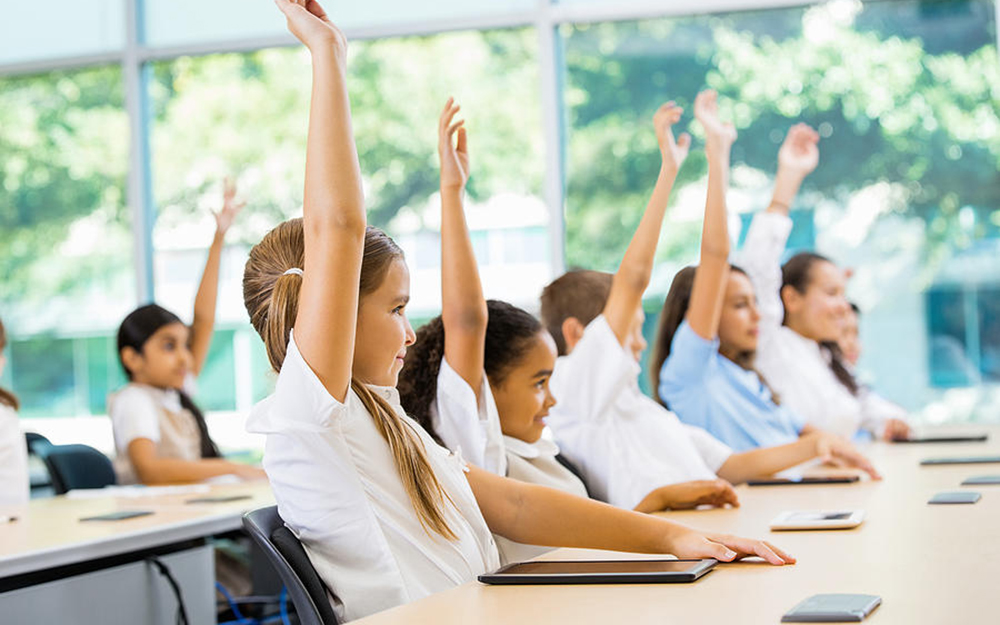
By Haddon Libby
As most of us know by know by now, the United States and California no longer has the best educational systems in the world. The International Education Database estimates that the United States is 26th behind countries like Kazakhstan and China despite spending more than $1,000 per month on each student. Countries with highest ranked educational systems are South Korea, Finland, Norway, Russia, Hong Kong and Japan.
According to the National Center for Educational Statistics, we have more than 58 million K-12 students in the United States at present with 87% in public school, 10% in private schools and 3% home schooled. These students attend 133,000 K-12 schools of which 69% are public, 26% are private and 5% are public charter schools.
We have 13,584 school districts with New York City being the largest having nearly 1 million students. Los Angeles Unified is second at 640,000 followed by Chicago (387,000), Miami (358,000) and Clark County/Las Vegas 326,000 students.
Our K-12 educational system employs 3.2 million full-time teachers for a gearing ratio of 18 students per teacher. California has the largest classes in the United States with 24 students per teacher while Vermont has 10.5 students per teacher.
Seventy-seven percent of teachers are female with 81% Caucasian, 9% Hispanic and 7% African-American. Of the nation’s 91,000 school principals, 55% are woman despite women representing 76% of teachers.
Spending on public education is $625 billion or $12,536 for every student making our educational system the most expensive school system in the world. Vermont spends the most at $21,000 per student while Utah spends the least at $7,200. California spends $9,400 per student. Only Switzerland and Norway spend more than the United States.
The typical American school has 525 students of which half are Caucasian, 26% are Hispanic, 16% are African-American and 5% are Asian-American.
Our high school graduation rate is 85%, an increase of 6% from the start of the decade. Iowa has the highest graduation rate at 91% followed by Texas, West Virginia and Tennessee at 90%. California with its 83% graduation rate is ranked lower than most states although not as poorly as the District of Columbia at 73%, Oregon at 77% or Arizona or Louisiana at 78%.
The United States has 1,600 two-year colleges and 3,000 four year schools. Approximately 2.3 million people graduate every year.
The Department of Education estimates that seven in ten high school seniors go on to take at least some freshman level college classes with 80% continuing into sophomore year. Stated differently, about half of high school graduates get a two or four year degree.
Of college dropouts, 40% have at least a B or 3.0 average. Oddly, there are few studies as to the reason for dropping out. A University of Washington study taken five years ago found that 40% of dropouts cited loneliness or isolation as their reason for departing while another 40% felt that they were not getting their money’s worth. Only 20% cited financial issues as the reason for leaving.
The Hechinger Report looked at the reason for the high dropout rate and found that a good deal of the problem was due to poor preparation at lower grade levels. Colleges and universities have to put 44% of African-American, 35% of Hispanic and 37% of low income students in remedial classes.
The importance of an advance degree shows up in a person’s take home pay as people with four-year degrees earn 66% more than their less educated neighbors while those with a master’s degree earn 3 times more than those who do not attend college.
What does all of this mean? If we want the best paying jobs for ourselves, our children and our children’s children, we must put a priority on education at all levels or face a less certain economic future.
Haddon Libby is the Founder and Managing Partner of Winslow Drake Investment Management, a fiduciary only investment advisory firm. For more information, please visit www.WinslowDrake.com or email HLibby@WinslowDrake.com.












































